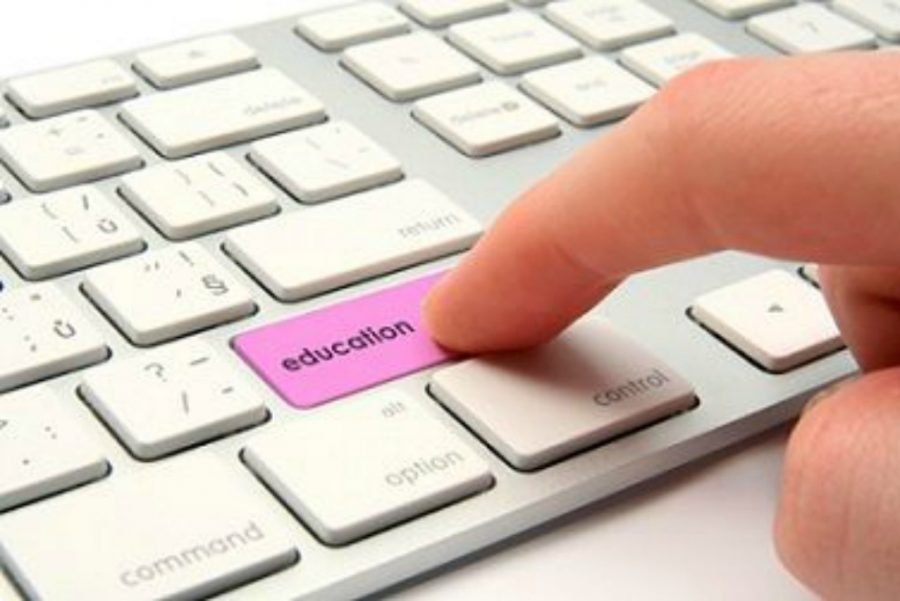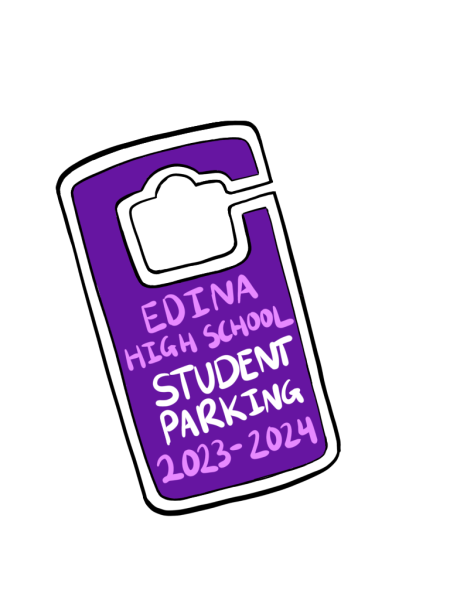Technology in Education
Technology in Education
April 18, 2017
48 states and the District of Columbia currently offer online educational opportunities to students. These opportunities include dual enrollment, credit recovery, summer school programs, and accelerated classes (including Advanced Placement, honors and enriched courses) all through the integration of technology in the schooling systems.
Integration of technology doesn’t mean using computers in just online classes; it means using computers in all classes. Technology integration implies that students learn content and convey their understanding of an educational topic through a device. This can be done with slideshow presentations, persuasive essays or research papers written with online software, or homemade videos. Educational devices make these learning options possible.
There are mixed feelings about the use of technology in the classroom, but Mary Beth Hertz, a high school art and technology teacher from Philadelphia is a strong proponent of educational technology. “Technology integration may not look the way we want it to until our students move beyond familiarity with tools and into being able to choose the correct tool for the job,” said Hertz. It takes time for students to be familiar enough with a tool to employ it for education beyond the tool itself. However, if students are given the time to explore with guided practice, full integration of technology in the class setting is possible.
Many schools across the United States are moving towards the further integration of technology into schools, but each school is in their own stages of integration which is a long process that takes a dedicated investment. According to Hertz, there are four specific stages of the integration process. The first stage is “sparse,” where technology is either unavailable or there is not enough available for everyone to use. Students are rarely given the opportunity to complete their assignments using technology. The second stage is “basic,” where technology is available in the school, but not used in the classroom. If technology is necessary for the class period, students have to make a trip to the school computer lab to use the one or two tools with which they are familiar. The third stage is “comfortable,” where technology is present in the classroom and is used on a consistent basis. In this stage, students are comfortable using a variety of tools on their device, and utilize them to create projects that bolster their understanding. The fourth and final stage is “seamless,” where students make use of technology every day in the class setting, and have various tools at their disposal.
The main difference between the third and fourth stage is that the third stage can mean that access to technology is limited to the class period. In the fourth stage, the school either provides each student with a laptop that they are able to use both in class and at home, or students have personally purchased a device.
One step some schools have taken to provide equal opportunities for all students is by supplying every student with the same type of technology. According to Scholastic, Virginia school districts guarantee each school with at least one computer lab and promise a laptop to each student. The following measures are important for the state’s lower income students. “About one third of the more than 40,000 students in our district do not have computers at home and, in many cases, do not have access to libraries or other venues that have computers with Internet connections,” said Mark Edwards, Superintendent of Henrico County Public Schools in Virginia. In the spring of 2001, Henrico County provided each high school teacher with an Apple iBook laptop so that they could familiarize themselves with the new teaching tool of the century in order to educate their students with the 12,000 newly distributed iBook laptops given to their high school students. As a result of the funds that have gone towards the full integration of technology in Henrico County high schools, Eric Jones, Executive Director of Secondary Education said, “We are seeing more collaborative, student centered work. Students are developing more 21st century skills— more problem solving, critical thinking and collaboration.”
Smartphones, laptops, tablets, and digital readers are all possible electronics that can be utilized in the school setting. While smartphones may not be teacher’s number one choice, they have been proven to be the most beneficial device in education for sixth through twelfth graders. Technology provides a way for students to review materials at any time, extend learning beyond the school day, personalize their learning, and improve school to home communication. For the few students who have zero access to any of those mobile devices, they can utilize the limited supply of laptops that the school is able to acquire with the budget. The Mankato Public School system in Minnesota is a perfect example of a school which encourages using mobile devices for education. “By allowing kids to bring in their own devices, you free up school resources for the kids who don’t have access. For example, in classrooms that have a group of four computers, finding time for all 30 students to use them can be challenging,” said Doug Johnson, director of media and technology for the Mankato Public School System. “In Mankato, 90% of the students have some sort of wireless-capable device, which leaves only eight students in a typical class who will need to use the class computers.” For schools fortunate enough to have the funding to supply each student with a device, the rewards of technology are prolific, but the financial truth makes it complicated for the majority of public schools that wrestle with reduced budgets and cannot seem to bear the expenses of or employ an adequate amount of teachers, never mind computers. This is exactly why districts similar to Mankato choose to experiment with allowing students to bring their own technology to school. According to a Pew Research study, around 75% of Americans between the ages of 12 and 17 owned a cell phone in 2010, and at least 19% of Americans had a tablet. Whether schools provide their students with the same devices or allow students to bring their own device, both methods are helping to end the idea that education is defined by wealth.
Edina High School has been in the process of integrating technology into its classrooms for years, most recently with the requirement that every student bring their own device through the eLearning2program. Similar to Mankato Schools, students who cannot afford to purchase a computer of their own are provided with a Google Chromebook from the school’s Media Center. However, cell phones and some tablets are not considered eligible devices for educational purposes in the classroom. As a city, Edina has taken measures to make sure that no child is left behind because of income level, and organizations such as the Edina Give and Go Foundation continue to collect school supplies and monetary donations throughout the year in order to provide the necessary supplies needed for an education at Edina Public Schools for those who need the extra help.











